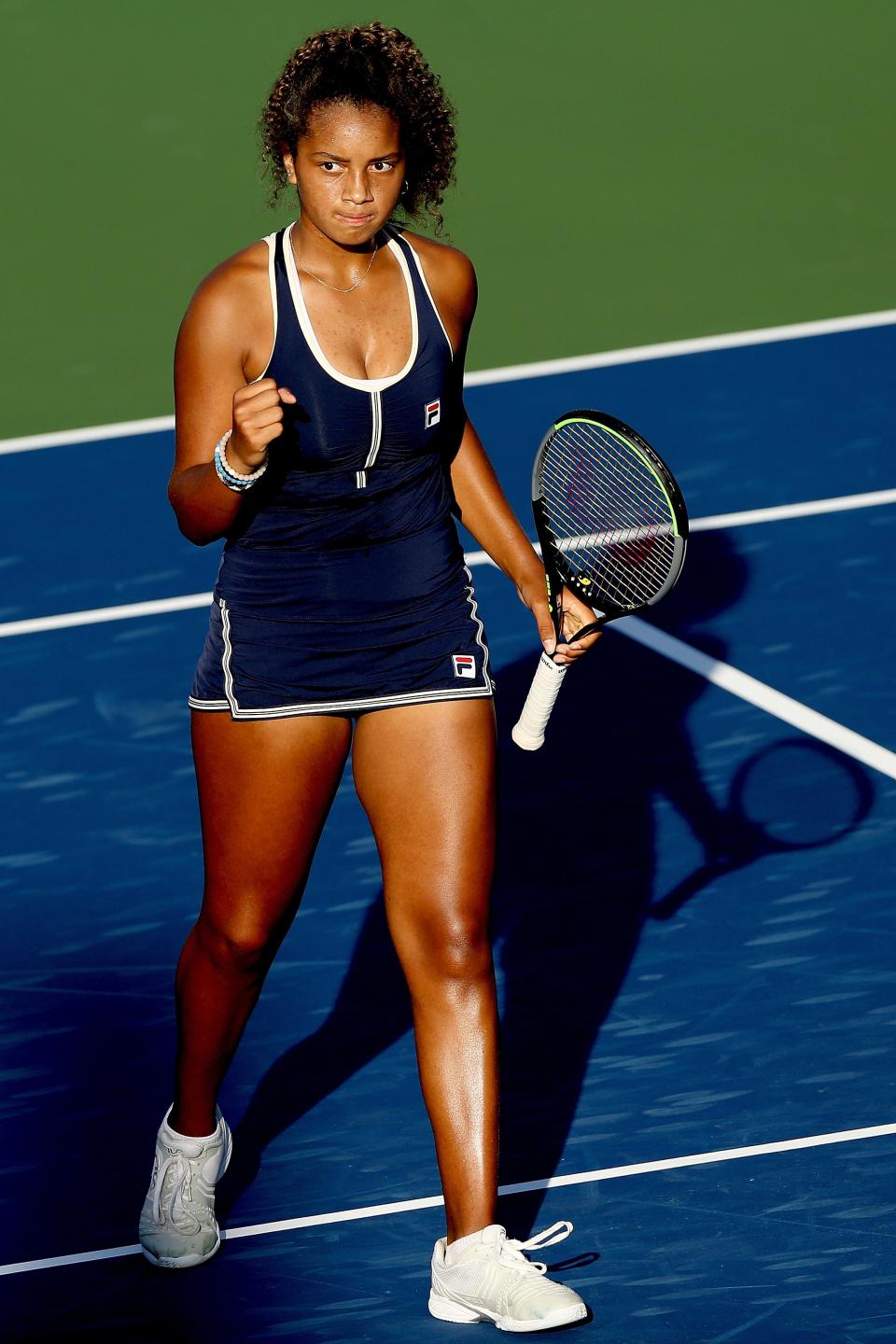Serena Williams vs. Sloane Stephens: Highly anticipated match highlights historic U.S. Open women's draw
NEW YORK – Seven years before she was the youngest player at the 2020 U.S. Open – and a part of tennis history - Robin Montgomery entered an essay contest. The topic was what you would do if you could follow Arthur Ashe’s path and give back to the sport.
In her winning entry, Montgomery said she wanted to bring tennis to places such as Pakistan and Afghanistan, where girls have virtually no opportunity to compete in any sport. She would show parents that “it is important for girls to play tennis like boys because girls would learn important life skills.” She wrote about how the game has cultivated her resilience and an appreciation for hard work. Then 9-year-old Montgomery, of Washington, D.C., concluded:
“Just like Arthur Ashe stated in one of his quotes, ‘An important key to success is self-confidence. An important key to self-confidence is preparation.’ By playing tennis the young girls will be prepared for many future events in their life.’ ”
Montgomery turns 16 Saturday. She was the youngest player in the 128-person Open draw, a precocious left-hander with a big serve and forehand, and a deft net game, too. She didn’t escape the first round, but the larger story was not two dropped sets, but the dozen Black women who comprised 37.5 percent of the full contingent (32) of U.S. female singles here - a record number in an event that dates to 1881.

Two of those players – Serena Williams and Sloane Stephens – will square off in a hotly anticipated third-round match in Arthur Ashe Stadium on Saturday. Nobody is happier about it than Martin Blackman, the general manager, USTA player development, and a Black man himself.
A Stanford graduate and former player on the men’s tour, Blackman said his passion for the sport was ignited as a young child when he and his older brothers listened on the radio to Ashe’s victory over Jimmy Connors at Wimbledon in 1975. Blackman was 5, and still the memory of that crackly broadcast stays with him.
“People see themselves and imagine themselves doing the same thing,” Blackman told USA TODAY Sports. “When we’re talking about all the great African-American women who are coming into the game, everything starts with Venus and Serena Williams. The power of what they accomplished at such a young age, doing it with very little financial means, with their parents, Richard and Oracene, giving them what they needed to be champions, is just incredible.”
Stacey Allaster, the first female tournament director of the U.S. Open, agreed.
“They have inspired kids across our country, little girls, to play tennis,” Allaster said.
Montgomery was one of them. A year before she wrote her award-winning essay, Montgomery tuned into the 2012 Olympic Games in London.
“(It’s) the earliest memory I have of watching tennis,” Montgomery told USA TODAY Sports in an email. “The match that I really enjoyed watching was Serena Williams playing against Maria Sharapova. Serena demonstrated her power and dominance in that match which really inspired me.”
Apart from the Williams sisters, Stephens and Montgomery, Black American women who are competing in singles here include Madison Keys, Sachia Vickery, Taylor Townsend and Asia Muhammad. Along with Coco Gauff, the 16-year-old who made a third-round run here a year ago and beat defending champion Naomi Osaka in Australia in January, the young guard of color at the Open includes Whitney Osuigwe and Hailey Baptiste, who are both 18, and 16-year-old Katrina Scott. (Baptiste and Scott were late wild-card entries after withdrawals.)
“I think it's awesome,” said Stephens, 27, the 2017 Open champion whose first significant victory came over Serena in the Australian Open quarterfinals in 2013. “Obviously right now kind of leading our sport on the women's side is African-American women, which is amazing.”

Apart from having the two fabled sisters leading the way, Blackman said he believes the structure and stability of the USTA player development setup has played a significant role. He credits his predecessor, Patrick McEnroe, with kick-starting progress with the hiring of renowned coach Jose Higueras, who essentially established a comprehensive approach and philosophy in how the game is played. Ola Malmqvist, the director of coaching, and Kathy Rinaldi, head of women’s tennis, have both been in their roles for a number of years and made major contributions. By working to break down the longtime divide between national programs and players’ personal coaches, and welcoming outside coaches into USTA camps, pro players can take advantage of the deep-pocketed USTA resources.
Blackman is a big proponent of supporting community programs that can bring top-flight instruction into largely underserved areas. He came to the USTA from the Junior Tennis Champions Center (JTCC) in College Park, Maryland, which was selected by the USTA for its first regional training center for its high-performance program. Montgomery comes out of JTCC. So does Francis Tiafoe, who is into the third round of the men’s draw. Blackman thinks that keeping world-class training close to home, and being able to support players with everything from coaching to tournament travel and strength and conditioning, has been nothing but positive.
“The training template has become so much more holistic,” Blackman said.
He has watched Montgomery since she was a little kid, even before she became an award-winning essay writer. “I think she (has) a great upside,” he said.
He figures that soon there may be little kids out there who will watch her play, and say, “I want to be like Robin Montgomery.”
Follow Wayne Coffey on Twitter @wr_coffey
This article originally appeared on USA TODAY: Black women make history at U.S. Open ahead of Williams-Stephens match

